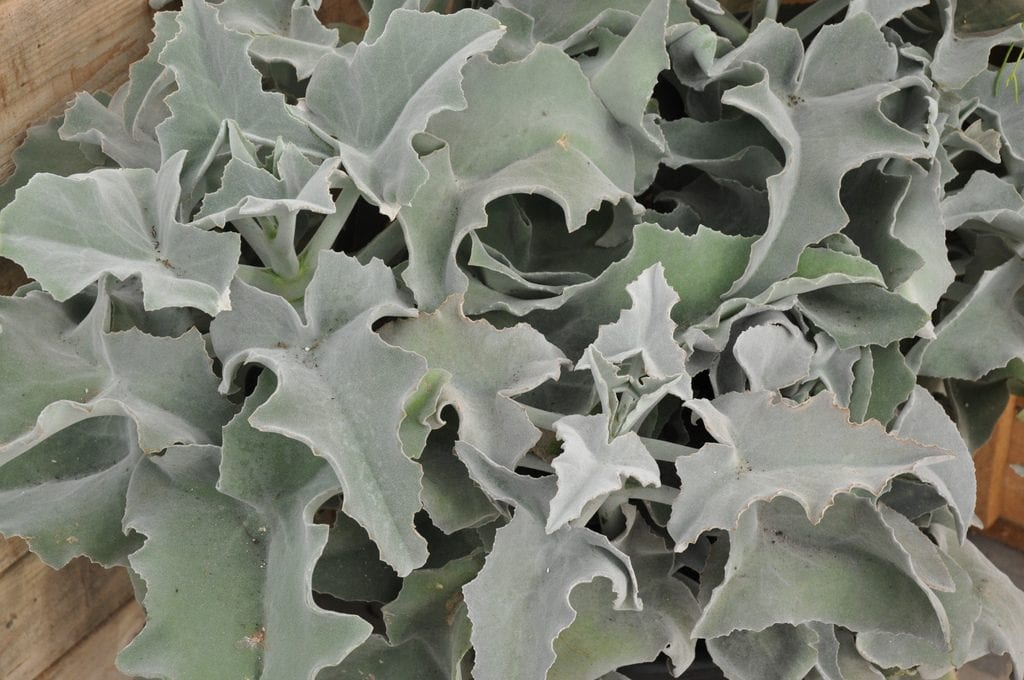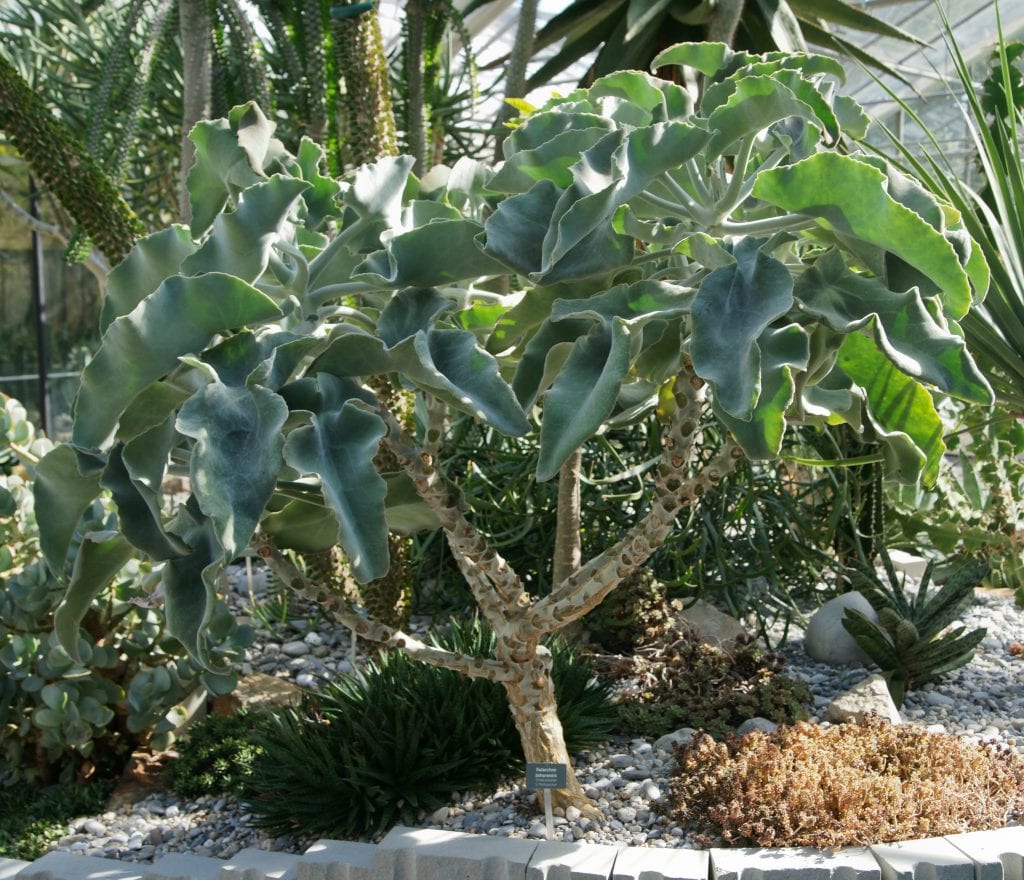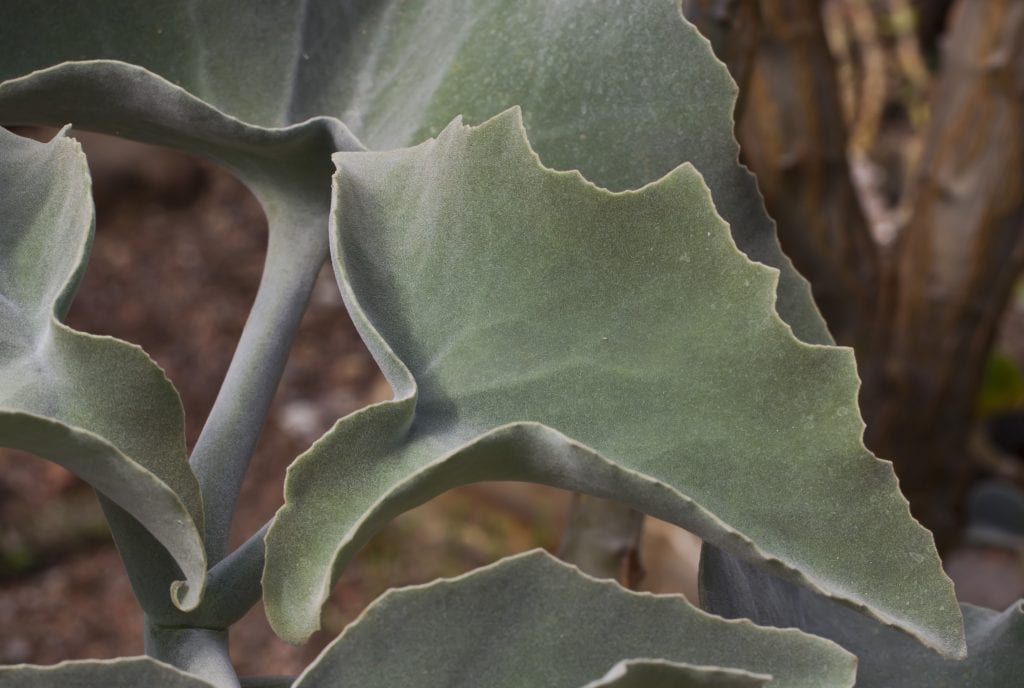
The Calanchoe de Behara, whose scientific name is Kalanchoe beharensis, is a succulent plant native to Madagascar that is somewhat different from the Kalanchoe that we are used to seeing. This one, unlike most of its kindIt grows as if it were a shrub or small tree, reaching up to 3 meters in height.
Its leaves are evergreen, so it can be very well planted in groups of two or three near, for example, the swimming pool, since it is a plant that does not make practically anything dirty. Do we know her a little better? 🙂
Characteristics of the Kalanchoe beharensis

Our protagonist is characterized by having large, triangular-shaped evergreen leaves. These are covered with velvet and are green-glaucous. Its flowers sprout in spring, and have a jug-shaped corolla and 4 welded petals. Its growth rate is quite fast; so much that in about 5 years we can get a copy like the one in the image above.
And how is your cultivation? Well it is suitable for beginners. It is a very resistant plant, which is not usually attacked by pests. It is also difficult for any virus, bacteria, or fungus to infect you. Of course, we must avoid puddling every time it is watered, since otherwise the roots would rot. Let's know how to take care of it.
Care

To have a beautiful Calanchoe de Behara the following should be taken into account:
- Location: outside, in full sun.
- Irrigation: 3 times a week in summer, and 1-2 / week the rest of the year.
- Subscriber: During spring and summer it is recommended to fertilize with mineral fertilizers, such as Nitrofoska or Osmocote.
- Substratum: it must have good drainage. You can mix black peat mixed with perlite in equal parts, or mulch with 50% sand.
- Pruning: It's not necesary.
- Multiplication: by seeds in spring, or by stem cuttings in spring or summer.
- Rusticity: supports mild and occasional frosts of up to -2ºC. In case the winter is colder, it should be located inside the home in a room where there is plenty of natural light and where there are no drafts.
What do you think of Kalanchoe beharensis? Here you have more information about the Kalanchoe plant
Hello, if you know something about cactus, can you help me? I bought a young cactus to plant, the thing I have in the bottom of a large bottle, since it is a school work. And it had to be reused. I planted it on common ground as well as I bought it. I leave it in the sun a lot, I water it a little ... but it doesn't grow, it remains as I buy it 🙁 What should I do?
Hello Baptist.
When you water, you have to soak - not puddle - the earth. Water twice a week, and fertilize it once a month with a specific fertilizer for cacti.
Anyway, you should know that the growth rate of these plants is very slow.
If you have any further questions, ask 🙂.
A greeting.